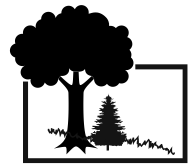MN Lawn Care Tips
Tips for Creating a Beautiful Lawn in Minnesota
| Kentucky Blue Grass | Kentucky bluegrass is the most common cool season grass. It is a high quality lawn, available in blends. Spreads moderately and will fill in small bare spots that popup occasionally. Kentucky Bluegrass will go dormant in hot, dry weather as well as during the cold winter months. Does poorly in extremely shady areas and is not recommended for extremely hot climates. No matter what climate it’s growing in, Kentucky bluegrass will require supplemental irrigation during hot, dry periods.Kentucky Bluegrass seed-blends that include mixes of perennial ryegrass, produce a tougher wearing lawn than pure bluegrass. With the addition of creeping red fescue, the lawn will tolerate shadier areas.Kentucky Bluegrass develops a shallow root system that is not very drought tolerant, and causes it to go dormant during extreme conditions. To insure its survivability, it must be given intermittent watering during prolonged drought conditions. Once the drought conditions dissipate, it will come back with a little nourishment and care.Shade tolerance: poorPlanting: seed or sodMowing height: 1-1/2″ — 2-1/2″
Water: Kentucky Bluegrass needs regular watering, will survive droughts by going into a dormant state. Fertilization: needs regular fertilization Maintenance: low Kentucky bluegrass was Introduced by colonists that brought it with them from Europe. |
| Perennial Ryegrass | Common perennial ryegrass usually only lasts one season. Germinates quickly and can be used as a temporary ground cover while the slower growing bluegrass plants take hold.The ryegrasses are best adapted to moist, cool environments where temperatures are not extreme in the winter or summer. In the United States, the northeastern and northwestern states are well suited to ryegrass. In the transition zone, perennial ryegrass may provide a permanent turfgrass. But in the southern states, both species serve as cool season annuals.Of all turfgrasses used in the South, ryegrass probably has the highest maintenance requirement.Mowing, watering, fertilization and pest management needs of ryegrass are higher than for any southern turfgrass. Ryegrass has a rapid growth rate in the spring and requires twice weekly mowing at the taller heights – above 1″; mowing at 2 — 3 day intervals at heights around 1″ and daily mowing at heights below an 1″.Ryegrass is the least drought tolerant of the southern turfgrasses and needs frequent watering in the spring and early summer. In many golf course situations, daily watering is not unusual on ryegrass greens and fairways. Even on lawns, ryegrass is the first grass to show symptoms of drought stress.Shade tolerance: good
Planting: seed Water: needs regular watering, but will survive droughts if not for extended periods Mowing height: 1-1/2″ — 2-1/2″ |
| Red Fescue | Red fescue is used in northern and temperate areas. Red fescues are fine with narrow deep green blades. Prefers shadier and cooler areas than most other cool season grasses. Red fescue is usually added to bluegrass to provide a better adaptable lawn. Establishes itself quickly compared to the slower growing bluegrass. Non-aggressive tendencies; looks good even in un-mown conditions such as along roadways.Red fescue is a cool-season grass used in cool, shaded, mountain sites, such as camps, resorts, and cabins where a reduced mowing, fertilization, and irrigation is desired. It does not do well in hot climates, except in shady, dry situations. In areas where Kentucky bluegrass does well, red fescue forms an excellent companion grass to increase bluegrass’ shade tolerance. Red fescue germinates slowly and It is moderately wear resistant.Identifying red fescueA very fine-bladed grass with a deep green color. The leaves are folded in the bud, there are no auricles, and there is a short membranous ligule. Red fescue has two distinct growing habits: creeping red fescue spreads very slow by very short rhizomes and Chewings fescue is a bunchgrass with an upright growth habit. |
| Turf-Type Tall Fescue | The confusion between tall fescue and fine fescue was increased by the introduction of the turf-type tall fescues because they are also promoted as “fine-leafed” like the fine fescues. The tall fescues are finer leafed than K-31 but not as fine leafed as the fine fescues.Turf-type tall fescue are becoming a popular turfgrass for homes and industrial sites. Turf-types are more coarse than bluegrass, though not as thick as traditional tall fescue commonly used as pasture grasses. The fescue is a bunch type grass, as opposed to the rhizomatic growth of bluegrass. Newer cultivars have the same rich green color as bluegrass.Tall fescue are more drought resistant than many other lawn grasses such as bluegrass or perennial ryegrass because roots penetrate deeper into the soil.Tall fescues are also more disease resistant and wear tolerant, making them ideal for heavy foot traffic areas and athletic fields. Like bluegrass, they are considered a cool season grass, remaining green for eight to nine months out of the year.Tall fescues must remain dense to keep blades thin. Proper mowing and fertilizing practices help keep blades thin; overseeding every other year may be necessary to improve the stand.Identifying tips
A coarse-textured medium to dark-green grass. Leaves are rolled in the bud. It has short, rounded auricles, a short membranous ligule, and an extensive root system. Because tall fescue has a bunch-type growth habit rather than a creeping-type, open areas may develop and need to be re-seeded. Seeding September and October are generally the best time to plant tall fescue. Earlier seeding tends to undergo excessive heat stress and seedling diseases, and later planting may not be fully established prior to winter. Depending on the area, seeding in December and early spring is generally not recommended because the plant does not have time to develop the deep root system needed to survive the hot summer. |
“Kentucky Bluegrass”. Landscape America. March 11, 2009 <http://www.landscape-america.com/grasses/bluegrass_ky.html>.
“Perennial Ryegrass”. Landscape America. March 11, 2009 <http://www.landscape-america.com/grasses/rye_per.html>.
“Red Fescue”. Landscape America. March 11, 2009 <http://www.landscape-america.com/grasses/fescue_red.html>.
“Turf-Type Tall Fescue”. Landscape America. March 11, 2009 <http://www.landscape-america.com/grasses/ttfescue.html>.
